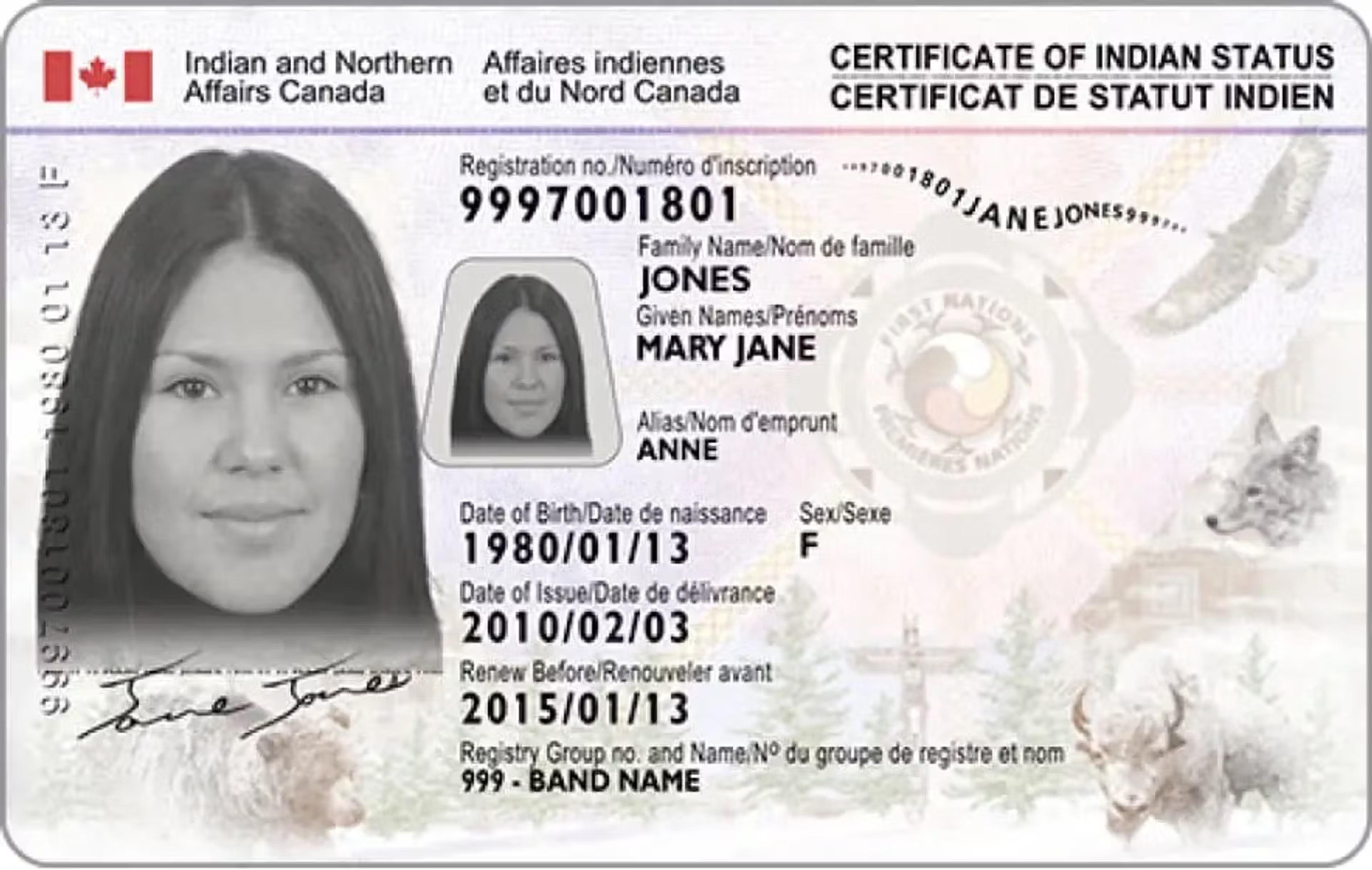2025 Landscape: What to know in Indigenous Communities, Canada and the U.S
Avneet Takhar
This year brings important developments for Indigenous communities and folks within Canada and the U.S.
These shifts will influence changes that are important to be aware of, and we cover different topics from updated legislations and benefits to knowing your rights and having access to a government-issued ID; breaking it all down for you.
Here's a look at everything you should know for 2025.
Indigenous Communities
The Importance of Carrying a Government-Issued I.D
Upon the recent U.S presidential elections, there has been concerns about the rights of birthright citizenship Native Americans- folks who are also U.S citizens as well as citizens of their states, and Tribal communities.
Across the news and social platforms, Indigenous folks have been relaying news of Native peoples being questioned by law enforcement and in some extreme instances, detained according to Navajo Nation citizens.
- While you should never be forced to prove your Indigenous identity on demand, having a form of valid identification, such as a Secure Certificate of Indian Status (SCIS) card can help avoid bureaucratic barriers.
- A government-issued ID is essential for accessing services and benefits, crossing U.S./Canada borders, and even ensuring safety during police encounters.
- Indigenous individuals often face challenges in proving their identity when cultural documentation (I.E, CIS laminated cards) is not recognized, unlike the SCIS card issued by Indigenous Services Canada.
- To improve accessibility, First Nations folks can renew or replace SCIS cards online.
*Keeping official identification on hand helps navigate systemic barriers, though it does not define Indigenous identity.

Knowing Your Rights
In seeing the rise of Indigenous folks being unfairly questioned about their identity, we have a quick list of Canadian and U.S laws that are good reference points.
In Canada:
"Carding" (street checks) remains controversial. In most cases, you are not legally required to provide ID unless:
- You’re operating a vehicle.
- You’re under arrest or detained for a legal reason.
In the U.S.
While ID laws vary by state, in general:
- ID is only required if arrested or driving.
- Police must have reasonable suspicion to detain you.
- Tribal IDs are legally recognized, but not always by local authorities.
Key Questions to Ask Law Enforcement:
- “Am I being detained?”
- “Am I free to go?”
- “What law requires me to show identification?”
Knowing your rights can help you assert them confidently in situations where your identity is being unfairly questioned.

Jay Treaty: Potential Opportunities
The Jay Treaty, signed in 1794, acknowledges the rights of Indigenous peoples born on either side of the Canada-U.S. border, allowing them to travel and work freely across it. However, no formal agreement exists for duty-free trade.
- With tariffs on Canadian goods delayed until March 4, 2025, discussions are ongoing about Nation-to-Nation trade (First Nation communities and American tribes) agreements to strengthen Indigenous economies and secure exemptions from future tariffs.
*At this stage, these remain trade discussions without any implementation.
The Evolving World of Social Media
Since the latest political changes in the U.S, and ongoing social media platform acquisitions, there has been a noticeable difference in how they've reflected one another.
Bluesky
The new social media platform that is slowly gaining traction as an alternative to Twitter, is Bluesky - a project started by the original Founder of Twitter, Jack Dorsey.
- Bluesky is attracting former Twitter users, especially those from liberal communities, as noted by social media researcher Axel Bruns.
- Users can customize algorithms for a personalized feed and greater content moderation.
- Since Elon Musk lifted Trump's Twitter ban, and the U.S elections Bluesky has seen a 500% surge, now with 24 million+ users.
- Bluesky bans hate speech immediately.
OneFeather is now on Bluesky—follow us here!
TikTok
The Trump administration ordered ByteDance to sell TikTok to a non-Chinese owner by April 2025, or face a U.S. ban. Trump also proposed U.S. ownership stakes in the app.
Recent Developments:
- TikTok was banned in the U.S. on January 19 for about a month under Trump’s orders.
- Creators lost partnership income during this period.
With TikTok's fate unclear, Indigenous content creators have urged their followers to join them across their other platforms, which could spark Instagram’s resurgence for video content.

Importance of Investing in Indigenous Youth
To prepare ourselves in this ever-evolving climate, supporting Indigenous youth is more critical than ever before.
- Encouraging their leadership, innovation, new ideas and blending of traditions with the business industry, to uplift them in ways that will prepare them for roles that make a difference to the world.
- Having aunties, uncles, grandparents and all the elders in their circle impart knowledge and wisdom that provides a guiding path whenever they need advice or a helping hand.
- Getting involved in events that centre Indigenous youth and their futures, such as Soaring, Spark , HIP , Aises (Canada-based), ICS, National Unity Conference, Native American Youth Leadership Conference (U.S-based).
Celebrating Indigenous youth sets them up for success in their endeavours, and teaching them how to collaborate with culture and innovation simultaneously plants great strength.

Moon Teachings
Acknowledgement of equinox and solstice is of significance in moon teachings as it embodies the rhythms of nature, and having a connection to "Grandmother Moon" can provide guidance.
- There's thirteen moons under the lunar calendar taught by "Grandmother Moon" and this acts as a timeline to exist harmoniously with nature.
There's a deep bond between the human and natural world, and as Indigenous folks an even deeper understanding of using natural resources for interconnectivity and sustenance.

Across Canada
Updates for Canadian Businesses
*Delayed until March 4, 2025
Goods Tariffs:
- For goods imported to the U.S from Canada, there could be a 25% tariffs charge except energy or energy resources which could be subject to 10%.
- List of goods here.
De Minimis Duty-Free Treatment:
- Currently the trade provision allows low-value imports to enter the U.S from Canada without paying duties and with minimal customs paperwork. It's designed to facilitate small shipments and e-commerce purchases.
- If the De Minimis Duty-Free Treatment is removed, it will require all affected goods to go through the formal customs entry process and pay duties.

Legislation Changes
Canada is set to roll out new laws this year that will bring updates for families, employees, retirees, consumers, people with disabilities, environmental policies, and the national economy:
1. Pharmacare Act
The Pharmacare Act (Bill C-64) aims to make prescription drugs more affordable and accessible by committing long-term federal funding to provinces, territories, and Indigenous Peoples.
2. Safeguards against high interest rates
New regulations cap interest rates on payday loans and similar high-cost financial products, aiming to protect consumers from predatory lending practices.

3. Canada Child Benefit support for bereaved families
As of January 2025, the Canada Child Benefit (CCB) now extends payments for up to six months after a child's death. Previously, some families had to repay benefits received after their child's passing.
This tax-free monthly benefit is based on family income, number of children, and their ages, and is generally paid to the primary caregiver of children under 18 in Canada.
4. ‘Anti-scab’ law
Legislation now prohibits employers from hiring replacement workers during strikes or lockouts, strengthening collective bargaining rights and promoting fair labour practices.
5. Dishonest marketing practices
Bill C-59 strengthens deceptive marketing laws by placing the burden of proof on businesses to substantiate environmental claims. It expands liability for greenwashing and grants the Commissioner of Competition greater enforcement power.

6. Absence following pregnancy loss
Bill C-59 introduces a new paid leave for pregnancy loss, granting eight weeks for a stillbirth and three days for any other type of pregnancy loss.

7. Enhanced disability support
Starting July 2025, a national disability benefit will provide income-based financial assistance to Canadians with disabilities aged 18-64.
8. CPP adjustments
In 2025, CPP (Canada Pension Plan) contribution rates remain unchanged, but the year’s maximum pensionable earnings (YMPE) increases to $71,300 (up from $68,500). A second YMPE is set at $81,200 (up from $73,200), allowing higher earners to contribute more towards CPP enhancement, which aims to boost future retirement income.

9. Tax bracket modifications
The CRA has updated income tax brackets for the new year:
- $57,375 or less – 15%
- $57,375.01 to $114,750 – 20.5%
- $114,750.01 to $177,882 – 26%
- $177,882.01 to $253,414 – 29%
- $253,414.01 and above – 33%
10. Amnesty program for banned guns
The amnesty period for banned assault-style firearms ends Oct. 30, 2025, allowing owners to surrender or deactivate them without penalty. Indigenous Peoples can continue using banned firearms for sustenance hunting.
Businesses can participate in a buyback program, but it is not yet available for individuals.
11. New developments to immigration in Canada
Starting in 2025, Canada will reduce permanent resident targets by 105,000 and limit temporary residents, expecting a population drop of 445,901. Priority will go to those already in Canada, especially in health and trades. International student permits will also decrease by 10%. The goal is to ease housing pressure, lower unemployment, and support the economy.
12. Higher taxes on alcohol
The federal government is maintaining a 2% cap on alcohol excise duties through 2025, limiting tax increases on beer, spirits, and wine that were originally set to rise 4.7% due to inflation.

13. Carbon price hike and rebates
The carbon price rises to $95/tonne on April 1, 2025, increasing $15 annually until 2030. While premiers oppose it, the government says it reduces greenhouse gas emissions. Eligible Canadians in most provinces receive quarterly tax-free rebates, with rural residents getting a top-up. B.C., Quebec, and N.W.T. have separate carbon pricing, while Yukon and Nunavut manage their own rebates.
Across the U.S
In 2025, several key policy changes in the U.S. influence the economy, immigration, healthcare, workforce, and voting laws:
1. Economic Policies
- Tax Cuts: The Trump administration plans to extend tax cuts, adding an estimated $4.6 trillion to the deficit, which may lead to social program reductions.
- Tariffs: High tariffs, especially on Canadian, Mexican and Chinese imports, aim to boost U.S. manufacturing but may increase consumer prices.
2. Immigration Policies
- Stricter Enforcement: New executive orders focus on border security and deportations, affecting immigrant communities .
3. Healthcare Policies
- Medicaid Cuts: Proposed budget reductions could remove 600,000 low-income Americans from Medicaid and end benefits for non-citizens.

4. Federal Workforce Changes
- Job Cuts: Agencies are ordered to terminate probationary employees (does not include military personnel and postal workers), potentially affecting thousands of federal workers.
5. Voting Rights
- Potential New ID Requirements: The SAVE Act requires federal ID for voter registration, possibly impacting up to 69 million women who changed their surnames after marriage.
These policies signal shifts in the U.S., affecting the economy, social services, rights, and employment. For a full list of executive orders the Trump administration has signed so far, click here.
*Citizens are encouraged to stay informed and engaged as these policies unfold, with some not yet finalized and under development.
To keep an eye on the continuing developments for Indigenous communities and folks within the U.S and Canada in 2025, subscribe to OneFeather's newsletter here.